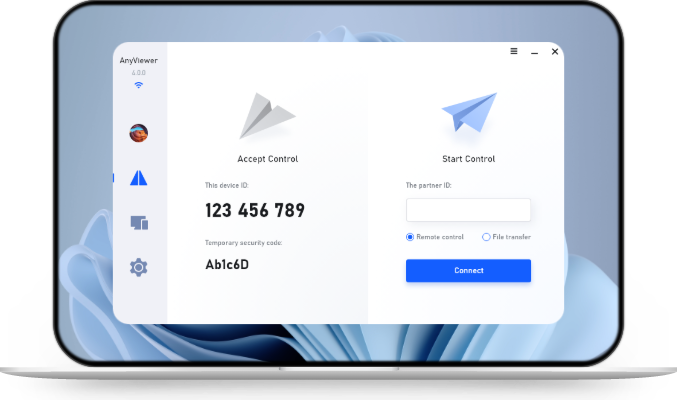Easily Fixed: Remote Desktop Not Saving Credentials
Here in this post, we list 4 solutions to help you get rid of the trouble “Remote Desktop not saving credentials” and recommend a better way to remotely access a PC.
Urgently! My Remote Desktop is not saving credentials
“I don't know why when I use Remote Desktop to remotely access a PC on my Windows 10, I have to keep entering the user and password every time. This is annoying, even though I checked the "Remember my credentials" box, and I connect with the same computer every time. What can I do? Any suggestions?”
For RDP users, we may encounter different kinds of issues when we remotely access a server. There's no denying that "RDP does not save credentials" makes the users annoyed and even an effect on their work efficiency and their feelings.
How to fix Remote Desktop not saving credentials [4 ways]
Here in this part, we'll be devoted to fixing Remote Desktop not saving credentials on Windows 11, 10, 8, 7... Keep reading.
Method 1. Set System in Credential Management
Actually, it seems that the credential manager on your computer has the wrong entry, so it is recommended to set the system to save credentials.
Step 1. Search “Credentials Management” in the search box and then open it.
Step 2. Click on “Windows Credentials” and choose “Add a generic credential”.
Step 3. Type the network address, user name, and password, and then click on “OK”.
Method 2. Check Group Policy Editor
It is said that if the policy "Do not allow passwords to be saved” and "Prompt for credentials on the client computer" in Group Policy Editor are set "Enabled", then the issue "RDP not saving credentials on Windows 10, 11, 8, 7 may occur. Therefore, we can reset the object policy to fix the issue.
Step 1. Press Win + R to run box and then type in “gpedit.msc”, hit "OK" to open Group Policy.
Step 2. Navigation:
Computer Configuration > Administrative Templates > Windows Components > Remote Desktop Services > Remote Desktop Connection Client
Step 3. Check the “Do not allow passwords to be saved” and “Prompt for credentials on the client computer” is Not configured or Disabled.
Method 3. Allow delegating credentials and add servers
Enabling the policy settings to specify the servers so that RDP won't appear not saving credentials. Keep reading.
Step 1. Press Win + R to run box and then type in “gpedit.msc”, hit "OK" to open Group Policy.
Step 2. Navigation:
Local Computer Policy > Computer Configuration > Administrative Templates > System > Credentials Delegation
Step 3. Double-click the policy “Allow Delegating Default Credentials with NTLM-only server Authentication“.
Step 4. Click on “Enabled” and select the “Show...” button.
Step 3. Type “TERMSRV/*” in the “Add servers to the list” box. Click “OK“, then “OK” again.
Step 4. Scroll down the list and find the following and then enable them respectively:
- Allow delegating default credentials
- Allow delegating saved credentials with NTLM-only server authentication
- Allow delegating saved credentials
Step 5. Once these policies have been set, the username and password should now save in RDP and you won't encounter the issue "RDP does not save credentials".
Method 4. Use a hassle-free RDP alternative: AnyViewer
If Remote Desktop still fails to save your credentials, it might be time to ditch the frustration and switch to a more reliable RDP alternative—AnyViewer. Unlike traditional RDP, which often runs into issues with saved credentials, permission errors, and firewall restrictions, AnyViewer is a free, professional remote access software that allows you to connect to remote computers without having to repeatedly enter credentials.
With AnyViewer, once you’re logged in to the same account on both devices, you can establish a remote connection with just one click, making the process seamless and more efficient. It’s especially useful for users looking for a hassle-free, secure, and time-saving solution.
Let’s walk through how to set it up:
Step 1. Install AnyViewer on both devices and open the application. Navigate to the “Log in” tab, then click “Sign up” if you don’t already have an account.
Step 2. Fill out the required information to create your free account.Step 3. After logging in, your device will be automatically assigned to your account. You’ll see it listed in the interface.
Step 4. Now, log into the same account on your second device. Under the “My devices” tab, both devices will be listed. Simply click the device you want to control and select “One-click control” to start the session instantly—no credentials required!
Step 5. Once connected, you can control the remote computer smoothly and securely.
In summary, if you're tired of RDP issues like not saving credentials, AnyViewer is a modern, secure, and far more convenient alternative. It's completely free, beginner-friendly, and works flawlessly across devices. Give it a try and experience remote access the way it should be—fast, easy, and stress-free.
Conclusion
To fix “Remote Desktop not saving credentials”, there are 4 solutions provided for you. If the solutions do not work for you or seem too time-consuming to take into practice one by one, it’s advisable to choose a third-party remote access software, like AnyViewer.

